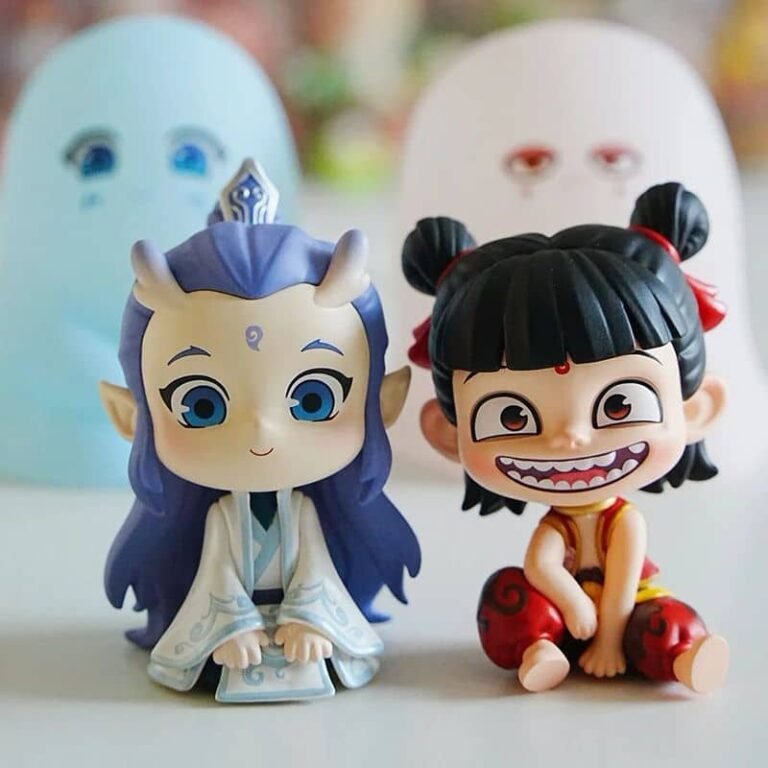What material is used to make plastic toy? And how are they?
This article introduce the materials that are used for making plastic toys, and their properties.

1. ABS(acrylonitrile, butadiene, and styrene)
Good stability, high hardness and toughness, resistant to falling and wear. Generally used in building blocks, some models (such as Transformers, plastic dolls, etc.), cars (inertial pull-back cars, electric cars, riding baby cars), and crawling plastic toys
2. PVC (polyvinyl chloride)
PVC has the characteristics of light weight, heat insulation, heat preservation, moisture resistance, flame retardancy, and easy construction. It is the most widely used material for plastic toys. Most toys that need to be inflated are made of PVC, such as sheep horn balls, jumping horses, balloons, etc. Animal models are also basically made of PVC as the main material, such as the dinosaurs of Sile and PAPO
However, PVC is a hard plastic. To make it soft, a large amount of plasticizers must be added. Plasticizers are easily released in a heated environment and are harmful to human health after contact. It is non-toxic in itself, but this type of toy should never be cleaned with boiling water.
3. PP(polypropylene)
PP is non-toxic and odorless. It can be soaked in 100°C boiling water without deformation or damage. Common acid and alkali organic solvents have almost no effect on it. Therefore, it is mainly used in children’s container products. In toys, it is generally used to make teethers, rattles and other products that children will put in their mouths.
4. EPP(Expanded Polypropylene)
EPP is a new type of environmentally friendly plastic with excellent heat resistance and low-temperature buffering properties. It is mainly used to make EPP hand-thrown airplanes (often seen in parks) and large square bricks for children’s castles.
5. PE (Polyethylene)
Soft PE is mainly used for film products, such as food cling film and plastic bags; it has poor temperature resistance and should not come into contact with food as much as possible.
Hard properties make it suitable for one-shot injection molding products. PE is most typically used for rocking horses and slides, which require one-shot molding. Now slides seem to use HDPE (high-density polyethylene). Both PE and HDPE are PE pipes, and HDPE has stronger pressure resistance.
6. EVA (ethylene-vinyl acetate copolymer)
Application in toys, in addition to floor mats, EVA is mainly used to make foam wheels for baby carriages, and some softer filling(because EVA has good water resistance).
7. PU (polyurethane)
There are basically three types of wheels for baby strollers, scooters, balance bikes, and bicycles: foam, solid, and inflatable. Foam wheels, in addition to the EVA ones mentioned above, there is another type, which is PU).
PU is also very common to make stress ball toys.
8. TPR & Silicone
Silicone is more expensive than TPR and other plastic materials, so it can only be used on small toys.
Silicone is resistant to high temperatures (-50° to 250°) and can be boiled in boiling water. While TPR cannot be sterilized at high temperatures, and silicone does not produce any toxic or harmful substances from the time the raw materials enter the factory to the time the finished product is shipped. Therefore, in recent years, silicone has gradually become the main material for teethers.
However, TPR is a very good material for making soft stress ball toy, because it has very good elasticity, hence the product made from it is malleable, squeezeable, stretchable, and squishy for sensory fun. There’s another article about TPR vs Silicone
How to choose?
Plastic toy is always a good choice for it has many advantages, such as Affordability, Variety and Design(easy to shape into detailed forms),Interactive Features(adding light, sound, moving parts), Water Resistance, Lightweight, Colorfast, Easy Maintenance(do not rust or rot) , etc.
The above raw materials are non-toxic in themselves and have their own characteristics. It is difficult to judge the quality of all toys based on a certain material. However, no matter which material you choose, the toys must meet the standards to make people feel at ease.
When choosing a toy, use your senses to determine:
1) Price
The younger the child, the more you should buy big brands of toys, as the saying, “you get wht you pay for”, good products are not cheap, the price can explain some problems.
2) Texture
High-quality plastic toys are better than poor ones in gloss and color brightness.
Many inferior toys usually adopt “seconded Material “(that is, wasted plastic products recycled and reprocessed materials). The color deteriorates after reworking. Although it may be not guaranteed that the good color must be safe, but the poor gloss are mostly products with risks.
3) Odor
That’s simple, everyone won’t choose products that with unpleasant smell. However, many PU stress ball toys are made with fruits flavor to cover the material odor. I can’t say that’s not good. but personally I don’t like that.
| Material | Odor | Lifespan | Safety | Recommendation index |
|---|---|---|---|---|
| ABS | N | √√√√√ | √√√√ | √√√√ |
| PVC | Y | √√√ | √√ | √√ |
| PP | N | √√√ | √√√√ | √√√ |
| EPP | N | √√√ | √√√√ | √√√ |
| PE/EVA | Y | √√√ | √ | √ |
| PU | Y | √√√ | √√ | √√ |
| TPR/Silicone | N | √√√√ | √√√√ | √√√√ |

